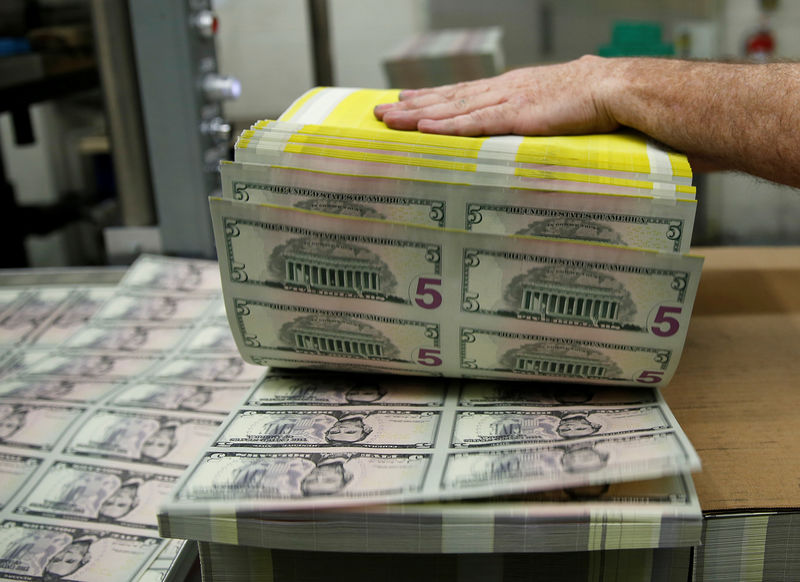As we approach the second half of 2024, investors are watching currency movements closely for indicators of how the forex market could develop in the coming months.
In this context, JPMorgan has announced its forecast for the US dollar. The bank’s analysis takes a closer look at the various economic forces and geopolitical developments that are expected to influence the dollar’s trajectory.
JPMorgan Dollar Forecast
The bank’s medium-term view on the US dollar is still optimistic, based on high interest rates, the growth cushion and other supporting factors.
However, the bank does note that “tactical concerns arise from emerging signs of waning US growth exceptionalism and satiated investor appetites.”
“Inflation differentials will be critical as central banks focus more on inflation than growth,” JPMorgan wrote. “The implications of soft/firm US inflation data are clear for the direction of Fed prices, but more nuanced for the USD.” The bank says DXY has been more sensitive to inflation misses.
Factors that influence the dollar exchange rate
Analysts at JPMorgan highlighted the dollar’s carry advantage, despite being a defensive currency, and the continued exceptionalism of the US as two factors driving the bullish stance on the US dollar.
While the first pillar of USD strength (carry advantage) remains intact, the second (persistent American exceptionalism) “seems to be losing its luster early on,” they wrote.
The bank says it is wary of these tactical risks and has recommended tactically reducing the length of the USD over the past week, although it still maintains a long position in the USD through options.
Elsewhere, focusing on the current picture of the US economy, Chris Turner, ING’s Global Head of Markets and Regional Head of Research for UK & CEE, told Investing.com that the dollar’s share of foreign exchange reserves has fallen over the past two decades , but has remained stable in recent years, while in the private sector “the dollar’s share of global deposits and global liabilities has been remarkably stable in the region of 60-70% over the past decades.”
Yet he argues that US authorities cannot be complacent. “We also note that while the US current account deficit is very manageable at 3% of GDP, it is largely financed by portfolio flows into long-term debt securities,” Turner said.
He believes the medium-term risk for Treasuries and the dollar is that without fiscal consolidation, “investors will need higher US yields and a cheaper dollar for Treasuries to be attractive.”
Furthermore, the US elections are believed to have a major impact on the dollar’s pricing over the next four to five years.
“A continued Democratic government is likely to be mildly dollar negative,” Turner says. “A Republican clean sweep that makes a big dollar positive for easy fiscal and tight monetary policy. A leftfield risk for the dollar is a Trump presidency without Congress, where he could look to a weaker dollar for stimulus – which is a policy advocated by Robert Lighthizer – a member of Trump’s trade team.”
USD to JPY prediction
When it comes to rates, JPMorgan says they remain anchored by the Fed policy rate path, with upside risks coming from Japan being behind the curve.
“Our USD/JPY forecast for YE24 is kept at 153 as we expect USD/JPY to remain anchored by the Fed policy rate path,” the bank wrote, explaining that their forecast is based on two Fed cuts this year. However, they believe that if the US economy remains resilient and no Fed cuts are priced in, USD/JPY could stabilize at 160.
“On the other hand, we are aware of the upside risks on the Japanese side as domestic and speculative selling pressure on the JPY is unlikely to subside as long as the BoJ stays behind the curve, suggesting that Japanese real rates will continue to rise in the coming years is likely to remain negative. ,” says JPMorgan.
USD to GBP prediction
For the GBP, JPMorgan says growth in Britain is improving, but seasonality, valuations and positioning of the GBP are leading to tactical short positions. The bank also explains that sterling is a cyclical currency with a high beta, so the recovery in production is important.
“The seasonality can come under pressure [the] ,” they claim. “The positioning of the GBP has shifted from max long to modest short, but this is less extensive than other G10 peers.”
As a result, one of the bank’s trading recommendations in its macro portfolio is to sell the GBP against the US dollar.


